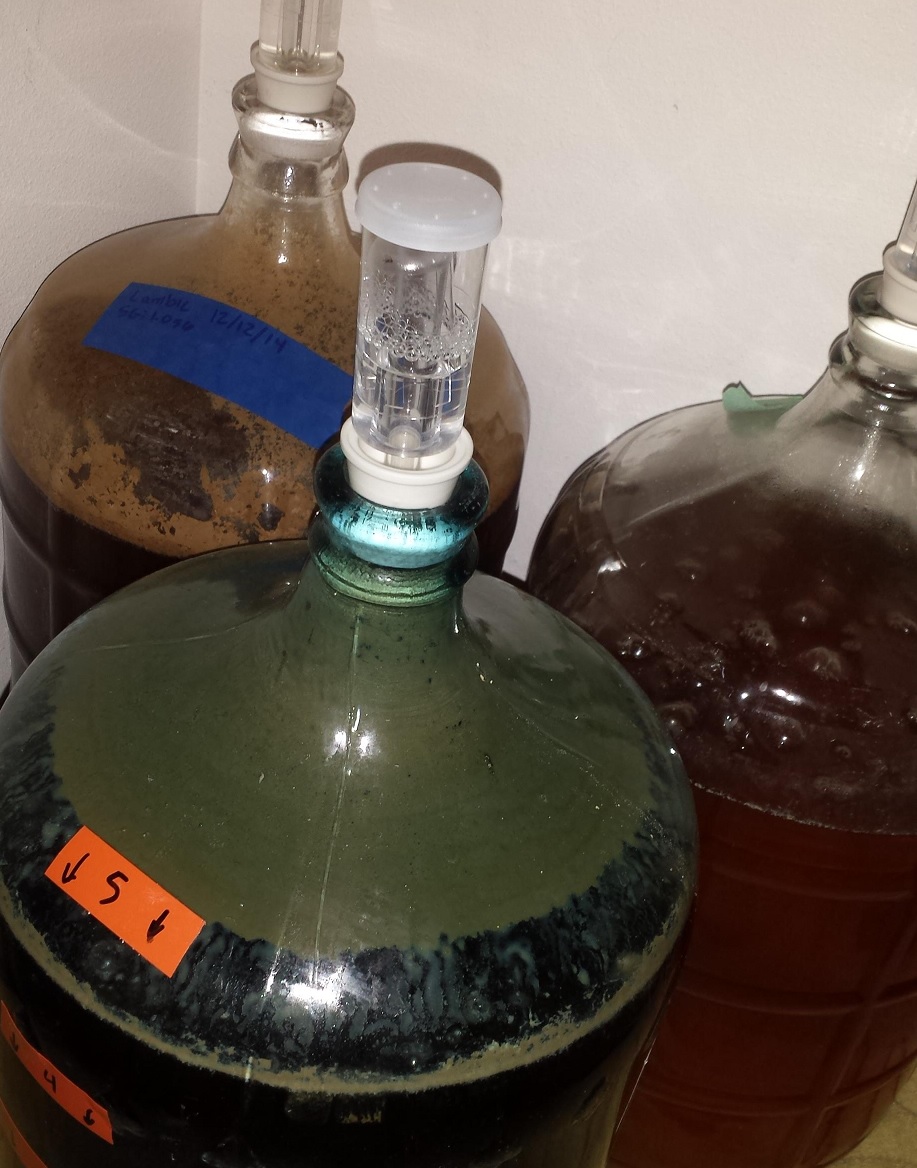BigPerm
Well-Known Member
- Joined
- Jan 27, 2014
- Messages
- 1,404
- Reaction score
- 355
Bretted berliner Weisse on peach purée. View attachment ImageUploadedByHome Brew1433432557.565687.jpg

Do you have a reference to Czechs making clean beer in history?
All beer throughout history would be prone to infection in some regard. However, the plisners of old Czech times were consumed at a rate that would not allow infections to be come very evident, as fermented drink was made safe from processing compared to surface or even ground water.
It also probably tasted of much cleaner fermentation when measured against beer that would have shown signs of unintended infection.
But I'm just some jackass on the interwebz, not a beer historian.
View attachment 282995
Another berliner Weisse. 2nd generation wyeast L. brevis. Still pretty slow to sour.
Gose fermenting with sauerkraut brine, brewed March 15 and transferred to secondary last weekend.
View attachment 278143
View attachment 278145
I've been to the Pilsner urquell brewery and they still do small batches in open wooden vats and secondary in huge wooden barrels in their lager caves. The beer was amazing
As far as I know!
Usually Pedio is what causes the beer to get sick/ropey. I am not sure what a texture of a non-metallic nosebleed is, so can't help you there.
As far as Cantillon goes, obviously there is some batch to batch variation, however they are consistently good. Pretty hard to make things exactly the same when the yeast/bacteria in the air, temperature, fruit/flowers/hops, etc are inconsistent every year. They are far more consistent than some others such as Fantome or De Cam.
View attachment 282995
Another berliner Weisse. 2nd generation wyeast L. brevis. Still pretty slow to sour.
Cantillon has the huge advantage of sheer volume to blend from.
It's not like they're doing single batches that consistently come out the same, they're blending 1-year, 2-year, and 3-year old beers together to create the final product. That's how they are consistently getting something that tastes good, I'd wager there's more then a few barrels in Cantillon's cellar that if tasted alone would not be so appealing.
Is that the one from Cascade that you sent me?

why would you do that? you want more vinegar in your beer?I gave it a good stir right after taking this picture.
This is a gallon of porter in a ceramic crock, so yes. As awesome as that pellicle looked, it had to go. :cross:why would you do that? you want more vinegar in your beer?
Yep, I should have been more descriptive. The mixed starter overflowed and got an acetobacter infection (slimy, wort was almost entirely vinegar). I had some porter lying around that didn't come out quite right, so I thought I'd take the opportunity to give vinegar a go...in a completely different room from any of my equipment or fermenters, of course.not often that you hear of someone wanting more vinegar...
why would you do that? you want more vinegar in your beer?
One might even say I want more vinegar, and no beer, in this instance.I think he wants more beer in his vinegar...
One might even say I want more vinegar, and no beer, in this instance.
Lambic after 4 mo in primary. Already nicely funky and lightly tart. Racked to secondary with more dregs and wine (Chardonnay & Pinot noir soaked oak)
Fresh wort went on the cake, of course.
View attachment 285922
Ride the lightning!



The Yeast Bay's Melange.
Enter your email address to join: